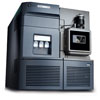
In 1986, the State of California implemented Proposition 65, “The Safe Drinking Water and Toxic Enforcement Act of 1986.” The law was enacted to ensure clean water and keep toxic substances out of consumer products. It has two parts: One prohibits business from discharging toxic substances into water or water sheds; the other prohibits businesses from knowingly exposing persons to toxic substances without warning.
The law’s intent may have been good, but enforcement, especially where food processors are concerned, has created a myriad of problems. Shortly after the law was signed, a colleague mentioned that it would be better named “the fair labor practices act for lawyers, lobbyists and laboratories.”
Processors in other states and around the world have been forced to make special provisions for products sold in California if they contain one of the many substances deemed toxic. Unethical attorneys have abused the process for profit, resulting in little benefit to the environment or consumers. In a January 2008 article by Jess Halliday, commenting on a petition to the FDA by Swanson Health Products to determine whether the proposition “conflicts irreconcilably with food and supplement regulations,” attorneys were accused of using “bounty hunter tactics.”
The discovery by Swedish scientists that acrylamide, a known carcinogen, formed in a variety of foods provided a new target. Acrylamide forms in baked and fried foods, especially those derived from grains and potatoes. FDA has identified 10 foods that contribute the highest levels of acrylamide to the American diet. Restaurant French fries, oven-baked French fries, potato chips, breakfast cereals, cookies, brewed coffee, toast, pies and cakes, crackers and soft, non-toasted breads are the culprits. The source of these items does not matter; nor does it matter whether the goods are manufactured from organic or conventional ingredients or whether the bakery is a huge multinational or a boutique.
What is sad is the selective enforcement of the law. In August 2008, the Attorney General’s Office of California announced that it had settled lawsuits against Heinz, Frito-Lay, Kettle Foods and Lance Inc. after the companies agreed to slash the levels of acrylamide in their products. The original lawsuit filed in 2005 also included McDonald’s, Wendy’s, Burger King, KFC and Procter & Gamble. These companies also settled.
The petition filed by Swanson Health Products in 2008 should be revisited. In addition, FDA should take jurisdiction over a law that does little to enhance public health, is unevenly enforced and has become a cash-cow for the state and certain lawyers. Acrylamide is not a product of commercial food processing. The human race has been consuming the compound since it learned that cooked foods were not only tasty, but lasted a bit longer.
FDA did issue a request in the Federal Register on August 26, 2009 (Vol.74, Number 164), but it needs to do more. Having individual states establishing so-called health guidelines that are contrary to the agency’s overall mission undermines its credibility and authority.
The bounty hunters need to be stopped. If California had approached the companies cited in the 2005 lawsuit and requested all of them reduce acrylamide, the response would have been positive, even though process modifications that reduce acrylamide tend to work better on the bench or in pilot plants rather than in commercial manufacturing situations. Instead, the state added costs to food processors, which ultimately get passed to the consumer.
This law has no real benefit to public health. And why haven’t companies such as small bakeries, organic processors and others been a target? Obviously, they don’t have deep enough pockets.

Somatic cell counter
Advanced Instruments’ SomaScope Smart somatic cell counter has received approval from the Lab Committee of the National Conference on Interstate Milk Shipments (NCIMS) to use an LED as its light source. Operator use is eased by wizard-driven SomaSmart software. Calibration is fast, accuracy exceeds IDF/ISO/FDA/NCIMS standards, and maintenance costs are low. The software also provides automatic operation reminders at start-up, and 24/7 technical service is available from the company. All working solution containers are enclosed within the instrument.Delta Instruments Div., Advanced Instruments, Inc.; 800-225-1620; www.aicompanies.com

The Waters Xevo TQ-S tandem mass spectrometer uses quantitative UPLC/multiple reaction monitoring (MRM) analysis and is capable of measuring target compounds in complex samples at femtogram levels or below. The Xevo TQ-S is designed for UPLC/MS/MS applications in food safety. Xevo mass spectrometers can be used with the company’s ACQUITY UPLC Systems and MassLynx Software.
Waters Corp.; 508-478-2000; www.waters.com/xevotqs
Componds testing
Thermo Fisher Scientific’s version 3.0 SkanIt software for the Multiskan FC microplate photometer incorporates parallel line analysis functionality for testing compounds. As a statistical calculation method, parallel line analysis is used to analyze the parallelism of standard curves of two different compounds and to calculate the relative potency between them. This calculation is used to analyze the efficacy of different compounds on biological or biochemical systems.
Thermo Fisher Scientific; 508-742-5254;www.thermofisher.com
Verifying the origin of fish
The Agilent Fish Species Identification method matches samples to a species DNA database. It uses the company’s DNA Fish Species ID Ensemble with a Model 2100 bioanalyzer lab-on-a-chip system, and specialized RFLP decoder software. The method reduces the time needed to confirm species in food from days to hours.
Agilent; 800-227-9770; www.agilent.com

GC/MS pesticide analyzers
Agilent triple quadrupole GC/MS pesticide analyzers are based on the Model 7000 Series triple quadrupole gas chromatograph/mass spectrometer (GC/MS/MS). The 7000 Series handles GC analysis, providing the levels of sensitivity and selectivity needed to measure trace levels in complex matrices. The pesticide analyzers come with an MRM (multiple reaction monitoring) database containing a broad range of commonly tested pesticides. Version one of the analyzer is designed for maximum flexibility, and allows users to add GC detectors. The system is easily scaled to shorten run times. The analyzer includes a method based on the company’s retention-time-locked (RTL) GC/MS/MS MRM database containing spectra for more than 500 pesticides.Agilent; 800-227-9770; www.agilent.com
Oil content analysis
Oxford Instruments’ NMR-based MQC analyzer can determine the oil content of seeds, nuts, grains and a wide variety of processed foods, including snack foods. Since NMR (nuclear magnetic resonance) acquires a signal from the whole sample and not just from the surface, it provides better accuracy and precision than alternative, secondary techniques. For some applications such as analyzing oilseeds, the unit can measure both the water and oil concentrations simultaneously.
Oxford Instruments America, Inc.; 978-369-9933; www.oxford-instruments.com


